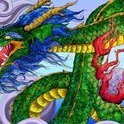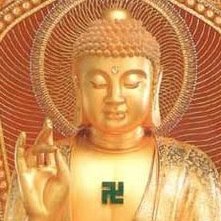Search the Community
Showing results for tags 'internal martial arts', 'tai chi', 'xingyi' or 'bagua'.
Found 103 results
-
I have read the first thirty six songs quite well and I see no mention of song. Softness is stressed by my sifu, sensitivity would be a more apt description. Does the mud stepping produce a state of song or is it like the so many of the songs say, the hard and soft mutually correspond to create a different kind of enenergy unique to baguazhang. This is one of my favorite songs. TWENTY EIGHTH SONG When the opponent is hard and I am soft, this is the RIGHT WAY. However, if I am soft and the opponent is hard, the mthod is also good. The hard and the soft mutually coordinate and win (control) from the WAIST. The conflict (battle) is decided on whose stepping is better.
- 67 replies
-
I hope this is the right place to post this... I'm new here (a Taoist/Christian wandering along), and need a little help. I have trained Tai Chi (Wu style) for around 20 years. I had a great teacher, who poured as much as he could into me with the time we had. After training under him for around 8 years, I had to move away. By that time I was teaching my own classes for beginners. But since that time I have been on my own. Now I find myself in a small town with no resources for me. The local tai chi classes are taught by a Hard Stylist (which is going to be zero help for internal energy work), and he doesn't even do Qigong. I am looking for some help on working with my Chi, as well as some question as to Mindfulness Meditation. There are so many people in the Personal Practice area, I am guessing someone could be of help, but how do you know? So I guess this is me casting my net to see what swims in. Any help anyone could offer would be greatly appreciated!!!
- 22 replies
-
- tai chi
- meditation
-
(and 1 more)
Tagged with:
-
Baguazhang, bodyguard art made famous in the 1800s and early 1900s Bodyguard fighting system made famous in the 1800s in Beijing. Bagua fighters were appointed as the top body guards in Beijing, and the Emperor and Prince themselves employed the founders of the system as their personal bodyguards. To protect yourself against multiple attackers in the 1800s in Beijing, or if you wanted to work as a bodyguard, this was the best style to have. Weapons are also used like spear, sword, hooked knives, and special concealed needles. It's a hybrid master style that can incorporate many different styles, and most fighters who learned Bagua would have had a background in other martial arts prior to learning Baguazhang. Two styles I think that are known to be incorporated in Bagua are Shaolin Lohan fist and Shuai Chiao. It's most unique feature is the Circle walking practice that is also found in very ancient Taoist cultivation and chi kung energy practices. Dong Hai Chuan- On Dong Hai Chuans tomb is a list of his disciples. The first is Yin Fu. Yin Fu was the first disciple of Dong Hai Chuan, and studied with Dong the longest. He trained constantly with Dong, day and night, for at least 10 years. He got the most skills. The second listed disiplce is Ma Weiqi. Not a lot is known about Ma Weiqi because he died at only 30 years old. He was said to have had a bad temperment. It is a shame he ended up being killed. I dont know if anyone really got his fulll transmission or got his art. The third listed disciple is Shi Dejong, the cousin of Yin Fu. Shi Dejong lived with Dong in Dongs later years, and got a lot of Dongs skills. The 4th listed disciple is Cheng Ting Hua, Cheng was already very skilled in Schuai Chiao and Chinese wrestling before learning from Dong, he only learned from Dong for 4 years. Yin Fu Yin Fu was the greatest of Dong Hai Chuans disciples in the art of Bagua. The Yin style is very combat oriented and effective. It doesnt mess around. Some of its strongest traits are the Ox toungue palm which originally derives from Shaolin and can be used to strike the opponents eyes, throat, or body, as well as sitting down heavy on the opponent and sticking. Another strength is the Yin Fu wrist grip. It is extremely hard to break. Yin Fu's grip was so powerful it was said to be almost like handcuffs, and could put a man to their knees simply by grabbig the wrist. Since it derives from Shaolin it also has powerful kicking methods. One of the most underated aspects of Yin style is it's wrestling, Schuai Chiao, and Qinna methods. Yin Fu, and most likely Dong Hai Chuan for that matter, were both Shaolin masters. What Bagua did, and what makes it so great, is that it softened the Shaolin. Here is a site I found with a pretty comprehensive lineage chart for the branches of Yin style- http://www.8gua.info...tml#Liu Zhenlin Yin Fu- Yin style Lohan sets in the system, and the 8 basic Yin style palms- More Yin style- Ma Wei Qi-
- 29 replies
-
- Bagua
- Baguazhang
-
(and 6 more)
Tagged with:



